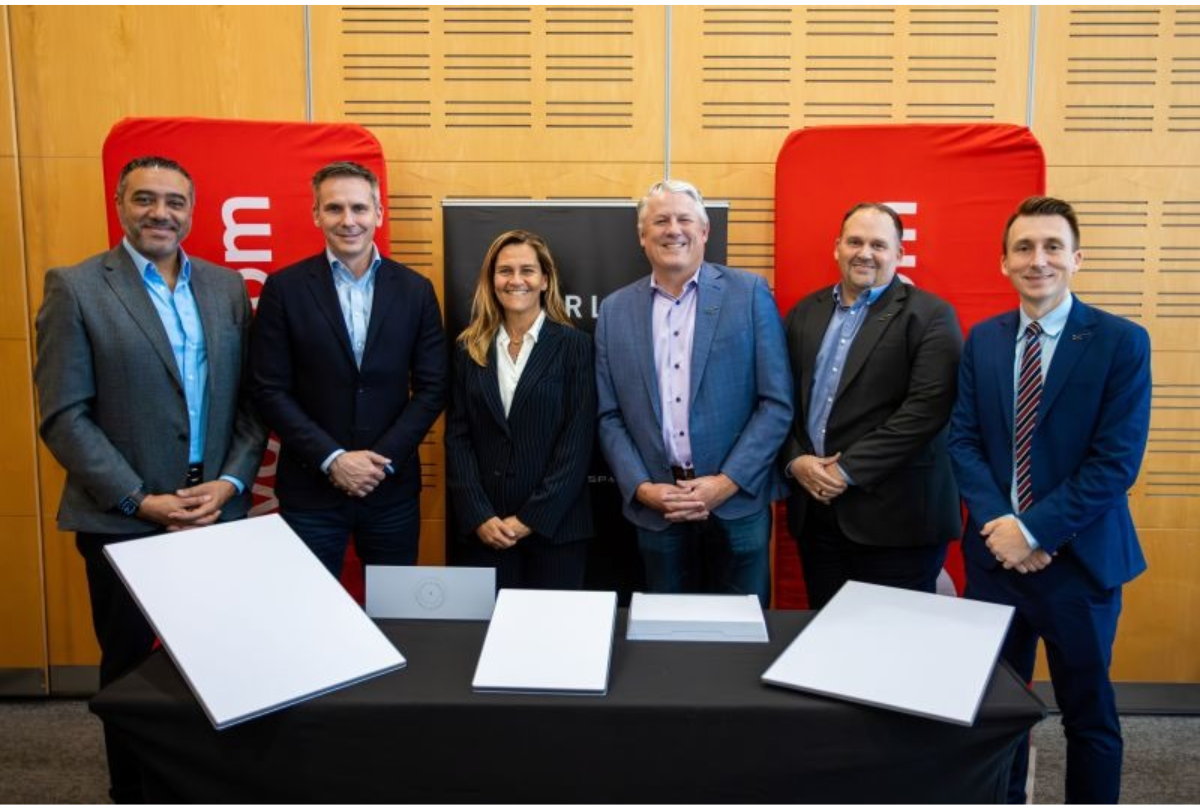Vodacom Partners with Starlink to Expand High-Speed Internet Access Across Africa – TechAfrica News

Report on the Strategic Partnership Between Vodacom Group and Starlink for African Digital Transformation
Executive Summary
Vodacom Group has entered into a significant partnership with Starlink to leverage its low Earth orbit (LEO) satellite technology. This collaboration is designed to expand high-speed broadband internet access across Africa, with a primary focus on bridging the digital divide in rural and underserved areas. The initiative directly supports several United Nations Sustainable Development Goals (SDGs) by aiming to foster economic growth, improve access to education and healthcare, and build resilient infrastructure.
Partnership Objectives and Alignment with Sustainable Development Goals (SDGs)
The core objective of this agreement is to integrate Starlink’s satellite network with Vodacom’s terrestrial infrastructure. This synergy is poised to deliver transformative impacts on digital inclusion and economic development, aligning with a broad spectrum of SDGs.
SDG 9: Industry, Innovation, and Infrastructure
This partnership is a direct contribution to building resilient infrastructure and fostering innovation.
- Universal Access: The collaboration aims to achieve near-universal network coverage, providing reliable internet to regions where traditional infrastructure is not economically or geographically feasible.
- Bridging the Digital Divide: By extending connectivity to remote communities, the initiative directly addresses the infrastructure gap, a key target of SDG 9.
SDG 8: Decent Work and Economic Growth
Enhanced connectivity is a catalyst for economic activity and job creation.
- Enterprise Solutions: Vodacom will resell Starlink services to enterprise and small business customers, empowering local economies.
- Industry-Specific Products: Tailored connectivity solutions will be offered to key African industries, including mining, agriculture, tourism, and financial services, promoting productivity and sustainable economic growth.
SDG 4 (Quality Education) & SDG 3 (Good Health and Well-being)
The expansion of network coverage to remote areas will have a profound social impact.
- Connecting Essential Services: The initiative will provide robust connectivity to remote schools and health centres, enabling access to digital educational resources and telehealth services.
SDG 10: Reduced Inequalities
By focusing on the “unconnected,” the partnership directly targets the reduction of inequalities within and among countries.
- Empowering Rural Communities: Providing millions in rural areas with access to digital services and information helps to reduce the disparity between urban and rural populations.
SDG 17: Partnerships for the Goals
The agreement between Vodacom and Starlink exemplifies a powerful cross-sector partnership to achieve sustainable development.
- Collaborative Action: This collaboration combines Vodacom’s extensive market presence in Africa with Starlink’s advanced satellite technology to achieve shared development objectives.
Implementation and Strategic Vision
Service Offerings
The partnership will result in a comprehensive suite of connectivity services:
- Satellite Backhaul Integration: Starlink’s LEO satellite technology will be used as backhaul for Vodacom’s mobile network, accelerating coverage expansion.
- Enterprise Reselling: Vodacom will act as an authorized reseller of Starlink equipment and services, creating localized value propositions for the African market.
- Complementary Technology: Starlink’s high-performance internet will be added to Vodacom’s existing portfolio of 4G, 5G, fiber, and GEO satellite services, offering a multi-technology approach to connectivity.
Contribution to Vodacom Vision 2030
This strategic accord is integral to Vodacom’s Vision 2030, which aims to significantly grow its customer base. By leveraging Starlink’s capabilities, Vodacom is advancing its commitment to universal coverage and connecting African communities to a better future, thereby reinforcing its role as a key enabler of the continent’s progress toward the SDGs.
Analysis of Sustainable Development Goals (SDGs) in the Article
1. Which SDGs are addressed or connected to the issues highlighted in the article?
-
SDG 4: Quality Education
- The article explicitly mentions that the collaboration will deliver “robust connectivity to remote schools,” which directly supports the goal of providing inclusive and equitable quality education. Access to the internet is crucial for modern learning environments.
-
SDG 8: Decent Work and Economic Growth
- The partnership aims to unlock “new opportunities for economic growth” by providing high-speed internet to businesses. It details enterprise solutions for various industries like “mining, oil & gas, agriculture, tourism, retail and financial services,” which can lead to increased productivity and economic development.
-
SDG 9: Industry, Innovation, and Infrastructure
- This is a central theme. The article focuses on building resilient infrastructure by integrating “Starlink’s satellite backhaul into Vodacom’s mobile network” to expand network coverage. It promotes innovation by using “Low Earth orbit satellite technology” to connect areas where “traditional infrastructure is not feasible.”
-
SDG 10: Reduced Inequalities
- The initiative is described as a “crucial step in bridging the digital divide.” By expanding network coverage to “rural areas” and “connecting the unconnected,” the project directly addresses the inequality of access to information and digital services between urban and remote communities.
2. What specific targets under those SDGs can be identified based on the article’s content?
-
Under SDG 4 (Quality Education):
- Target 4.a: “Build and upgrade education facilities that are child, disability and gender sensitive and provide safe, non-violent, inclusive and effective learning environments for all.” The article’s plan to provide “robust connectivity to remote schools” is a direct contribution to upgrading education facilities to create more effective and inclusive digital learning environments.
-
Under SDG 8 (Decent Work and Economic Growth):
- Target 8.2: “Achieve higher levels of economic productivity through diversification, technological upgrading and innovation…” The provision of “high-speed, low-latency broadband internet” to industries such as agriculture, mining, and financial services is a form of technological upgrading aimed at boosting economic productivity.
-
Under SDG 9 (Industry, Innovation, and Infrastructure):
- Target 9.1: “Develop quality, reliable, sustainable and resilient infrastructure… with a focus on affordable and equitable access for all.” The collaboration aims to expand network coverage and deliver reliable internet, particularly to rural and remote areas, which aligns perfectly with developing resilient and equitable infrastructure.
- Target 9.c: “Significantly increase access to information and communications technology and strive to provide universal and affordable access to the Internet…” The stated mission to “connect every African to the internet” and achieve “universal coverage” directly addresses this target.
-
Under SDG 10 (Reduced Inequalities):
- Target 10.2: “By 2030, empower and promote the social, economic and political inclusion of all…” By “bridging the digital divide” and connecting remote communities, the project empowers people with access to digital services and information, promoting their social and economic inclusion.
3. Are there any indicators mentioned or implied in the article that can be used to measure progress towards the identified targets?
-
For Target 9.c:
- The article implies progress can be measured by the proportion of the population covered by a mobile network (Indicator 9.c.1). The entire initiative is about expanding this coverage.
- Vodacom’s strategic vision provides a specific corporate-level indicator: to grow its customer base to 260 million and its financial services customers to 120 million within five years. This growth is a direct result of expanded network access.
- The article also mentions that Starlink is already serving 25 African countries, which can be used as a baseline indicator for geographic expansion.
-
For Target 4.a:
- An implied indicator is the number of remote schools, health centres, and communities that gain robust connectivity as a result of the partnership. While the article doesn’t provide a number, it establishes this as a key outcome.
-
For Target 8.2:
- Progress could be measured by the number of enterprise and small business customers in Africa that subscribe to the new services. The article states Vodacom will resell Starlink services to these customers, making their adoption a key metric.
4. Table of SDGs, Targets, and Indicators
| SDGs | Targets | Indicators (Mentioned or Implied in the Article) |
|---|---|---|
| SDG 4: Quality Education | Target 4.a: Build and upgrade education facilities to provide effective learning environments. | Number of remote schools provided with robust internet connectivity. |
| SDG 8: Decent Work and Economic Growth | Target 8.2: Achieve higher levels of economic productivity through technological upgrading and innovation. | Number of enterprise and small business customers utilizing the new internet services across industries (mining, agriculture, etc.). |
| SDG 9: Industry, Innovation, and Infrastructure | Target 9.1: Develop quality, reliable, and resilient infrastructure with a focus on equitable access for all. | Expansion of network coverage to rural and previously unconnected areas. |
| Target 9.c: Significantly increase access to ICT and provide universal and affordable internet access. | Growth in Vodacom’s customer base to 260 million; Increase in the proportion of the population covered by the network. | |
| SDG 10: Reduced Inequalities | Target 10.2: Empower and promote the social and economic inclusion of all. | Reduction of the “digital divide” by connecting remote communities and empowering them with access to digital services. |
Source: techafricanews.com
What is Your Reaction?
 Like
0
Like
0
 Dislike
0
Dislike
0
 Love
0
Love
0
 Funny
0
Funny
0
 Angry
0
Angry
0
 Sad
0
Sad
0
 Wow
0
Wow
0
















































/environment-climate-change-and-health-(ech)/water-sanitation-hygiene-and-health-(wsh)/landfill-tuvalu-36092.tmb-1200v.jpg?sfvrsn=5c21fe40_1#)

.jpg.webp?itok=0ZsAnae9#)
























